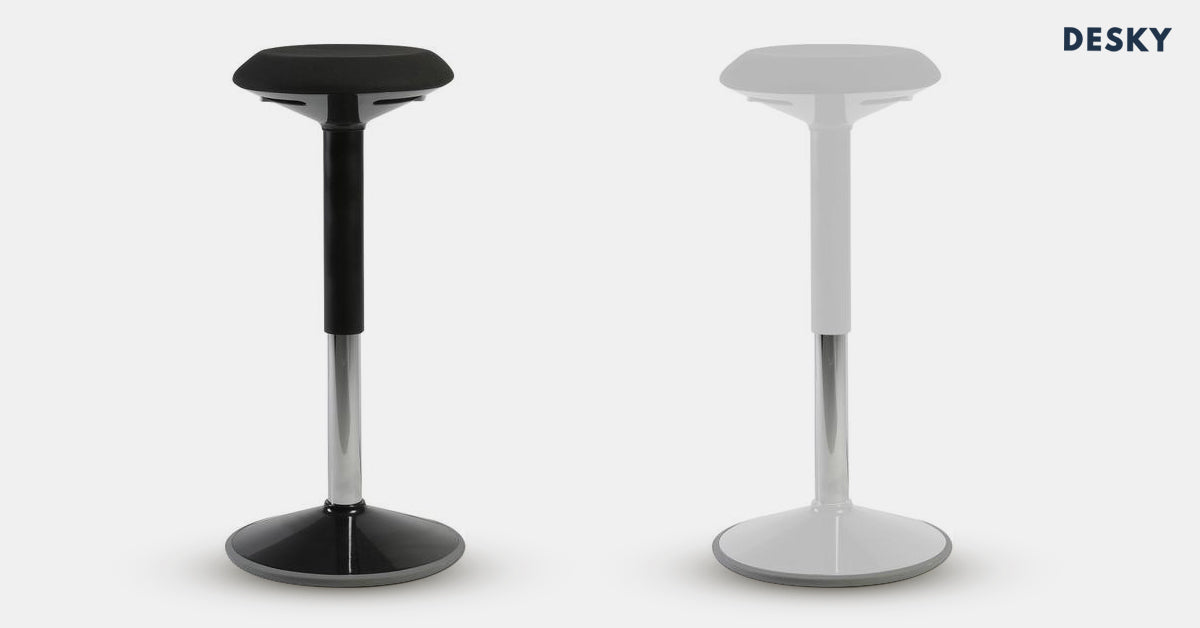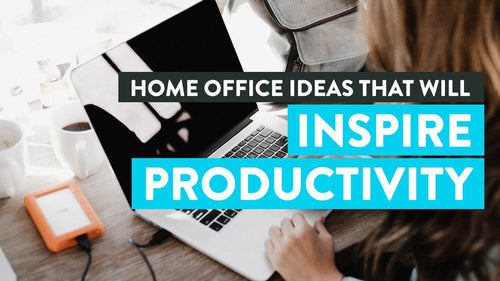
News
7 Best Ergonomic Office Chairs For Lower Back Pain
Hayden AdamsBack pain is the number one complaint amongst office workers, and the reason for this is almost always related to poor posture. And that is almost always related to a poor chair. Our seating posture is just as important as when we are standing. In fact, we probably need to pay more attention to it.
The human body evolved for us to stand upright most of the time. Only relatively recently in our evolution did we even invent the chair. But of course, in the modern world of work, standing is not always possible. This means that we spend much our time in our office chairs, in a position which isn’t natural for our body. Unsurprisingly, this can create issues.
Common Causes of Lower Back Pain
Most people who work in an office environment will have experienced some level of back pain. And even if for you it’s only a slight niggle, it is still a sign that something is not quite right. If left to develop, these issues can develop into more serious problems which can become chronic. So many wonder what can be done about a sore back, understandably.
It may be that the answer is right in front (or underneath) our eyes. Many claim that with ergonomic chairs back pain can be banished, but can it really be that simple? We looked into it.
Can Your Office Chair Make Your Back Hurt?
The short answer is, yes! A badly designed chair or an office chair that is not fit for purpose can do real damage to your back. The body is not designed to be sat down all day, and to do this the muscles in the lower back or lumbar area are placed under strain. This strain is exacerbated by poor posture, and extended periods seated. In the short term this will cause pain and discomfort, but can quickly develop into a more serious problem.
A badly designed office chair will offer little support and encourage poor posture. For most people, this means they sit leaning into their desk with their back unsupported. This compresses the vertebrae and the disks in between them, which can lead to serious back pain, and a whole host of other long term issues.
Whereas, the best office chair will offer lots of support and promote good posture. A well designed mesh chair will work with your body shape to relieve this strain and provide back support. Knowing exactly how chairs support the back is important to make the right choice of office chair.

Recognizing Badly Designed Chair
A chair that boasts a stiff, unyielding backrest, chances are it's not conducive to proper spine alignment. The support provided should make your natural inward curve feel comfortable and not overly accentuated.
Indentifying Good Back Support In Office Chair
Dynamic backrest flexibility is key for optimal lumbar support. For a chair with proper back support, it should provide support to maintain the natural curve of the spine. This usually means that the chair ensures your back is flush against it, providing lower back support.
Ergonomically designed chairs prove excellent at aligning your body posture, prominently supporting the spine's inward curve at the lower back. For this purpose, a chair providing adjustability in lumbar support, both in terms of depth and height, is mandatory. A fitting chair that provides this kind of support will generally exhibit a backrest width between 12 and 19 inches.
How Do I Stop My Office Chair From Hurting My Lower Back?
The first and most important thing you can do is to choose the right chair. You need a chair that is designed to fit the natural curve of your spine in a seated position, especially at the base. This is known as lumbar support, and is the most important feature in relieving back pain.
The best office chairs are not designed just for lower back support though. The rest of the backrest is designed to take the strain off of the muscles supporting the whole spine and the neck. This gives all of the muscles across the back support, meaning no one part takes more than it’s fair share of the load.
For example, many people sit forward as this feels more comfortable on the lower back. However, this refers the strain to the upper torso. The same is true in reverse if you slouch in your seat. Choosing a chair that allows you to maintain the correct posture is the best way of preventing back pain.
If you're dealing with lower back pain discomfort, there's a variety of ways you can reduce and alleviate your discomfort. Here are some common practices that can help reduce lower back pain:
- An ergonomic office chair with lumbar support will help you sit more comfortably. Invest in one to stop your lower back pain, which is a result of slouching and sitting for long hours at a desk without proper posture or support
- Reducing inflammation is the key to reduce lower back pain. Ice packs work by applying a cold temperature, which reduces swelling and alleviates some of the pain that you may be suffering from.
- Alternatively, A heating pad can soothe pain and stimulate blood circulation to the region of pain when applied.
- A massage is a wonderful way to relax, reduce tension, and heal the body
- A standing desk is a great way to improve your physical and mental health. They are designed with ergonomics in mind, allowing you to alternate between sitting and standing positions. This helps reduce strain on your lower back as there's no need for long periods of uninterrupted sitting time.
Necessity of lumbar support in chairs
Office chairs equipped with lumbar support provide beneficial enhancements for better posture. Lumbar back support acts as a fill between your lumbar spine and seat, reinforcing the natural inward curve of the lower back. This healthy alignment helps in reducing the risk of back strains, sprains, and other conditions related to improper posture. Furthermore, a well-supported lumbar setup can also increase comfort and productivity during longer periods of seated work.
Correct chair lumbar support
Proper placement is crucial when it comes to faithful lumbar support. Targeting the right area, your lumbar, which is located in the lower back region, aligns with the bottom of your chair's backrest. Getting it just right involves fitting the support slightly above your belt line. The official US Occupational Safety and Health Administration official website provides more in-depth information on ergonomic standards and lumbar support placement.
How to choose lumbar support
When selecting a lumbar support, the chief factor to consider is its adjustability for individual comfort. Placing your lumbar support an inch or two above the belt line ensures it fits in the small of your back for the best ergonomic results. It's important to adjust and find the perfect spot to alleviate lower back pain. Additionally, keeping your feet flat on the ground also plays a crucial role in maintaining proper posture.
Consider the following while choosing lumbar support:
- Adjustability to find the ideal comfort spot
- The right fit is around the small of your back
- Your feet should be flat on the ground for better posture
What Helps Back Pain From Office Chair?
Back pain in the workplace is normally caused by bad posture, so the best way to help it is to choose a comfortable chair that allows you to correct this. They are built with the shape of your spine at the forefront of the designer's mind. More importantly, they allow you to ‘dial in’ your optimum position, which is essential as we are all built differently.
Fixing Your Posture
To find the correct posture for you at your desk, you can follow these simple steps:
- Sit at the end of the chair, and allow yourself to slouch completely.
- Draw yourself up in the chair slowly. Curve of your back as far as is comfortable.
- Release the position slightly, by about 10 degrees.
- Sit up, relaxed, with your back straight. Push your shoulders back a little. Your buttocks should touch the chair rest.
- Bend your knees at a right angle, with your knees slightly higher than your hips. If your feet don't reach the floor, use a footrest or stool for extra support. It should be high enough that you can keep your feet flat on it.
- You need to have your eyes level with the top of your screen (ideally lower), with your arms by your side, bent at right angles so they meet the keyboard
Finding The Best Chairs For Lower Back Pain in USA
Only ergonomic chairs can help you achieve this position, whilst also providing the support your back needs. The most important role the chair plays is in maintaining the right posture, and key to this is flexibility. We come in all different shapes and sizes, so by definition, there is no one size fits all ergonomic chair. For all of us though, the correct posture is very important, as is the position of the chair relative to the desk.
And so the best chairs are the ones that allow the greatest range of adjustments, both in the support they offer, and the position relative to your workstation.
Here are the features to look for in an ergonomic chair:
- Adjustable Lumbar Support - As the lumbar area is so prone to strains and aches, this is one feature you can’t go without. Adjustable lumbar support means you can raise or lower this area independent of the back, and find the exact right setting for the curve of your lower back, and make sure you maintain good posture.
- Adjustable Arms - As we said before, to avoid back pain every part of your posture is important. Being able to rest your arms at a comfortable position will relieve strain on your entire up body, the back included. If bad posture leads to tightening in the neck and shoulders, this can soon move down into the upper back.
- Adjustable Seat Height - As above, maintaining the correct position relative to your desk means you can keep your back straight and supported at all times. So being able to adjust the height of your seat is essential if you are to remain pain free. Nearly every chair offers this function.
- Height Adjustable Back Support - Most office chairs will allow to change the height and the tilt of the back support, to fit your individual frame. This is generally not hard to find: it’s the most comfortable upright position.
- Backrest Tilt - Not an essential, but a chair with adjustable tilt just allow for that extra bit of adjustment which can make all the difference to your comfort. A chair that tilts with your weight can also help if you move around frequently, preventing you from overreaching or straining the muscles in the lower back.
- Footrest - Believe it or not, where you put your feet is very important in preventing back problems. If you need your chair high in order to maintain the correct position to your desk, and your feet don’t rest flat on the floor, you should be pairing your chair with an adjustable footrest so you can place some weight on your feet. This helps take the strain off the already overtaxed muscles in the lower back. most drafting chairs tend to have this feature due to their higher resting position.

Benefits Of Ergonomic Chairs
Good for back
Ergonomic chairs offer notable benefits for spinal health. Ergonomically-designed chairs, crafted with attention to posture and body alignment, play a crucial role in reducing the risk of back problems. They assist in maintaining an improved posture, which significantly contributes to minimizing non-specific back discomfort. According to the Occupational Safety and Health Administration (OSHA), maintaining a neutral posture can help diminish back stress and impediments in the long term.
Fix posture
Ergonomic chairs are a popular solution for maintaining good posture and alleviating back issues. They offer pivotal support to your lower spine during prolonged periods of sitting. These chairs promote a healthier posture, thereby mitigating back discomfort. Unlike ordinary chairs, ergonomic chairs can be adjusted and tailored to the individual's specific needs, providing a more personalized form of support.
Good for those who have degenerative disc disease
Degenerative disc disease intensifies the necessity for a well-designed chair. Pain stems from the spine's inability to bear the body's weight efficiently. An ergonomic office chair such as from Desky could be the optimum solution. These chairs come with adjustable height and armrests, tailored lumbar support, and a comfortable seat depth to fit all individuals, making it ideal for those dealing with degenerative disc disease.
What About Backless Chairs?
Sitting on a chair without back support can present mixed experiences. Although it promotes the adoption of an upright posture, the lack of support may potentially pose certain health risks. Over time, a lack of appropriate back support could potentially induce unwanted aches, strains, and even spine and back issues. Naturally, your professional demands while seated influence your experience. So, despite the potential for improved posture, the potentially detrimental impacts may overshadow these benefits.
Improved posture with backless chairs
- Mimics the benefits of standing.
- Strengthens core muscles.
- Boosts energy and productivity.
- Relieves tension in the back and neck.
Are chairs without back support good?
The intricate design of the human structure craves support, particularly for the back. This support becomes all the more crucial when intensive tasks are being executed on your computer. In a scenario where a chair offers no back support, your shoulders bear the brunt, which could potentially lead to back pain.
Low back chairs
Unlike their standard counterparts, low-back executive chairs are designed to provide significant support to the neck and the lower back, optimizing spinal alignment. This unique feature helps reduce fatigue, prevent pain, and keep chronic back issues at bay by maintaining postural integrity.
Who Needs An Ergonomic Chair
Ergonomically designed chairs are not just for those with existing back conditions or discomfort. With the rise of sedentary jobs, employees who spend most of their work hours seated, such as clerks, data entry operators, and electronic assembly-line workers, often complain about musculoskeletal issues, varicose veins, and stiff necks. Ergonomic chairs can significantly improve their working conditions and health.
What Are the Best Computer Chairs For Lower Back Pain?
Choosing the best ergonomic chair can be quite a challenge, but it doesn't have to be. Desky has done all the research for you and compiled some of our top choices with lower back support in order to help relieve any discomfort associated with sitting at your desk or computer each day.
Not only are these desk chairs good for relieving pain caused by prolonged sitting, they also promote increased productivity and better health overall through posture correction and support!
Desky Pro Ergonomic Chair
{{ spec_pro_chair }}The Desky Pro Chair is one of the best desk chairs for back pain on the market. This seat provides customizable lumbar support and is designed to mimic the spine, so you can move comfortably and fluidly through a wide range of movements.
Desky Pro+ Ergonomic Chair
{{ spec_pro_plus_chair }}The Desky Pro+ Ergo Chair is a desk chair designed to alleviate lower back pain. The synchro-tilt mechanism in the seat and backrest move independently in slightly different angles as you rock or recline, giving you the optimum position of comfort. This intuitive adjustable design means that there's less need for manual adjustments throughout your workday.
Desky Elite Chair
{{ spec_elite_chair }}The affordable Elite Ergonomic Chair by Desky is an innovative ergonomic chair that gives you the ultimate customised sitting experience. With features like height, headrest, back, lumbar support and three-way arm adjustment to name a few—this budget friendly option outshines most chairs at its price point with additional perks such as synchro mechanism for easy seat depth adjustments!
Desky Ace Chair
{{ spec_ace_chair }}The Ace Ergonomic Chair is a high-quality chair that comes with all the features you would expect in an expensive ergonomics chair, but at a fraction of the cost. It includes adjustable headrest height and tilt combined with seat depth and four different recline lock positions so users can personalize their sitting experience to fit specific needs or preferences. If back pain constantly prevents those inspiring ideas from coming through, then the reliable lumbar support will be essential for your peace of mind!
Desky Active Sit Stand Stool
{{ spec_active_stool }}You can be on your feet all day at work, but sometimes you need a little rest. While extended periods of standing aren't good for anyone's health, the Desky Active Wobble Stool makes it easy to take that break when you need one and return to being active quickly.
Luminous Mesh Chair
{{ spec_luminous_mesh }}The Desky Luminous Mesh Chair takes the mesh chair and elevates it to a new level. How? The unique feature of the luminous is its in built synchro-mechanism that adjusts as you move—making sure your posture doesn't falter throughout the day.
Desky Motion Ergonomic Stool

The sleek and lightweight Desky Motion Ergonomic Stool is made for the modern office. This stool can be adjusted easily and the ergonomic motion stool adapts seamlessly to changing working conditions with its light yet sturdy design that allows you (and your back) more freedom than ever before!
Best Chair For Long Sitting
The kind of chair that is best for long sitting is an ergonomic chair that provides adequate support, comfort, and adjustability for the user. An ergonomic chair can help prevent or reduce the risk of musculoskeletal disorders, such as back pain, neck pain, and carpal tunnel syndrome, that are associated with prolonged sitting. One example of an ergonomic chair that meets these criteria is the Desky Pro+ Ergonomic Chair.
The Desky Pro+ Ergonomic Chair is a stylish and versatile chair that features a breathable mesh back, a fabric seat with a waterfall edge, a synchro-tilt mechanism, and a supportive headrest.
The chair also has height-adjustable arms, back, and headrest, as well as a tension control knob that allows the user to lock the chair in three different positions or leave it open for a fluid range of movement. The chair has a sturdy five-caster wheel base that enables easy repositioning and a seat capacity of up to 150 kg (330 lbs).
Best kind of chair for posture
Postural alignment is a critical factor to consider when choosing an office chair. Ergonomic chairs, specifically those with adjustable support, can accommodate varied body shapes and sizes, making them a wonderful choice for posture improvement. One notable example is chairs with adjustable lumbar support that fit your lower back, curving away from the back of the chair. This feature encourages a natural spinal curvature, thus significantly improving posture.
Are hard or soft chairs better for your back?
Just as Goldilocks discovered, the sweet spot for comfort doesn't lie at either extreme. According to medical research on seating configurations, overly soft chairs can cause your back muscles to work harder to maintain proper posture and support your body’s weight.
As surprising as this might seem, a firmer chair often proves to be more beneficial for your back. It encourages you to maintain a healthy posture, thereby reducing undue strain on your muscles and improving your overall comfort.
Want the most comfortable chair for PC use? Find out here.
How Long Should You Sit in an Ergonomic Chair?
Prolonged sitting, irrespective of the chair type, can negatively impact your body and overall health. It's recommended to adopt the 20/20 principle, taking a 20-second break every 20 minutes. Effectively, you should aim to stand or move around every 20 to 30 minutes. Our bodies appreciate regular movement, and incorporating this routine can notably reduce the potential adverse effects of sitting.
How To Determine the Best Office Chair for You
When trying to determine the right chair, observe the level of comfort provided. Does the chair help you maintain an upright posture without strain? Does it provide sufficient back support? How about the height? Does it allow you to maintain your feet flat on the ground with your thighs parallel to the ground? Additionally, consider a chair offering adjustability to personalize your requirements further.
Should I Get Ergonomic Chair or Not?
Ergonomic chairs are advantageous for a myriad of reasons, foremost among them being the health benefits that come from using such tailored furnishings. Support for the lower spine, maintaining joints in a neutral position, and reducing neck and shoulder discomfort are just a few of the ways in which these chairs can aid in building a healthier work environment.
Frequently Asked Questions
Is it better to sit high or low in a chair?
Optimal chair height can significantly improve your overall comfort and reduce strain. Positioning yourself higher on your chair can contribute greatly to alleviating neck, shoulder, and back strain. Especially when your work requires prolonged hours of looking down at a computer, sitting up higher can decrease eye, neck, and upper back strain. Consideration must be taken to ensure correct ergonomic posture.
Are armless office chairs bad?
Multipurpose arm-less office chairs often fall short of genuine ergonomic standards. Two major drawbacks of such chairs include the lack of padding and a rigid backrest, which together spearhead a relentless assault on your spinal discs, especially in the lower spine. Not being adjustable, such chairs cause your back muscles to continually strain, inviting a host of lumbar discomforts. Therefore, it is essential to choose a comfortable chair with adequate support.






